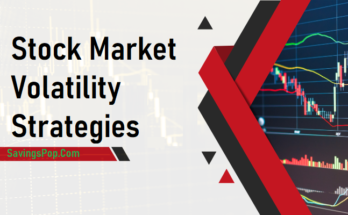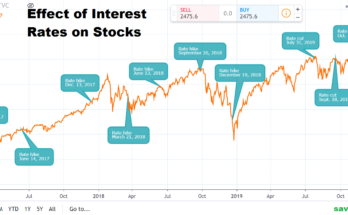Financial market symptoms are important equipment used to apprehend the modern kingdom of monetary markets and expect future movements. These signs and symptoms offer insights into the monetary gadget’s health, market developments, and investment possibilities. Whether you are an investor, analyst, or policymaker, records on economic market signs are important for making informed picks. This comprehensive manual will delve into the 3 Key Financial Market Indicators, discover how they work, and speak about their programs in funding and economic analysis.
Types of Financial Market Indicators
Financial market indicators are extensively categorized into 3 kinds: leading, lagging, and coincident indicators. Each type serves an exclusive purpose and affords particular insights into market conditions.
Leading Indicators
Leading indicators are utilized to forecast future economic activity. They typically change before the economy begins to follow a specific path. These indicators provide early signals about where the economy is headed, allowing investors and analysts to anticipate future market movements. Key leading indicators include:
- Stock Market Returns: Stock costs are frequently visible as a leading indicator because they replicate investor expectancies about future monetary performance. Rising stock fees commonly sign optimism about the economic system, at the same time declining inventory prices might also suggest worries approximately a financial slowdown.
- Consumer Confidence Index (CCI): The CCI measures the general self-belief of clients inside the financial possibilities. High customer confidence usually ends in improved spending and investment, which may power a monetary boom. Conversely, low customer self-belief may signal decreased spending and a ability monetary downturn.
- Building Permits: The range of building allows issued can sign destiny creation activity and monetary increase. A boom in construction frequently suggests self-belief inside the housing marketplace and broader financial situations, whilst a lower may additionally advise a slowdown.
- New Orders for Capital Goods: Orders for durable goods, specifically capital goods, can indicate destiny commercial enterprise investment and monetary expansion. A boom in new orders regularly alerts a boom, whilst a decline might also recommend a slowdown in business funding.
- Average Weekly Hours Worked: Changes within the common variety of hours labored according to week with the aid of personnel can offer insights into hard work marketplace conditions and financial pastime. Increasing hours advise better demand for labor, whilst decreasing hours can also suggest a capacity slowdown.
More Read: How Do Financial Markets Work?
Lagging Indicators
Lagging indicators confirm trends in the economy. They change after the economy has already begun to follow a particular trend, providing confirmation of past trends rather than predictions. Key lagging indicators include:
- Unemployment Rate: The unemployment price measures the share of the exertions strain that is unemployed and actively seeking employment. It is considered a lagging indicator as it typically adjusts after the economic device has already commenced to enhance or decline.
- Corporate Profits: Corporate income replicates the overall profitability of companies and is often used to verify traits in financial hobbies. Rising company earnings generally imply a robust economy, while declining earnings may also advocate financial challenges.
- Consumer Credit: The stage of consumer credit score affords insights into purchaser spending and borrowing conduct. An increase in customer credit score can sign better customer self-belief and spending, while a decrease may additionally indicate monetary pressure.
- Business Inventories: Changes in commercial enterprise inventories can confirm monetary traits. Rising inventories may additionally suggest slowing income or overproduction even as declining inventories can sign robust demand and financial increase.
- Labor Costs: Labor price measures, such as unit labor charges, reflect adjustments in wages and productiveness. Rising labor fees may additionally indicate inflationary pressures at the same time as declining labor expenses can sign an economic weak spot.
Coincident Indicators
Coincident indicators represent the current situation of the economy. They change simultaneously with the overall economy, providing real-time insights into economic conditions. Key coincident indicators include:
- Gross Domestic Product (GDP): GDP measures the full fee of all goods and services produced within a rustic. It is a comprehensive indicator of financial overall performance and is regularly used to assess normal economic health.
- Industrial Production: Industrial production measures the output of the commercial quarter, which includes production, mining, and utilities. It offers insights into the contemporary degree of business pastime and economic boom.
- Personal Income: Personal income measures the general earnings earned through manner of people, which consists of wages, salaries, and funding income. It displays the existing economic conditions and buying power of clients.
- Retail Sales: Retail sales determine the overall receipts of retail stores and offer insights into customer spending and economic interest. Changes in retail sales can sign shifts in customer behavior and economic conditions.
- Capacity Utilization: Capacity utilization measures the percentage of ability output that is being produced with the aid of industries. High ability utilization indicates robust demand and monetary boom, whilst low utilization indicates economic weakness.
Key Financial Market Indicators
Understanding particular economic market indicators can offer precious insights into market developments, economic situations, and investment possibilities. Here, we’ll explore a few key monetary market indicators in detail.
Economic Indicators
- Gross Domestic Product (GDP): GDP is one of the maximum crucial monetary signs. It measures the whole value of goods and services produced inside a rustic and affords a photograph of a normal monetary pastime. GDP is mentioned quarterly and annually and is regularly used to gauge monetary boom or contraction. A rising GDP suggests financial enlargement, at the same time as a declining GDP indicates a financial slowdown.
- Unemployment Rate: The unemployment charge measures the proportion of the labor force that is unemployed and actively looking for work. It is a lagging indicator that reflects past monetary conditions however is important for knowledge hard work marketplace health. An excessive unemployment fee can sign monetary distress, at the same time as a low charge suggests a robust hard work market.
- Consumer Price Index (CPI): The CPI measures the average change in expenses paid via purchasers for a basket of products and offerings. It is a key indicator of inflation and is used to alter wages, pensions, and other economic variables. Rising CPI values suggest growing inflation even as falling values suggest deflation.
- Producer Price Index (PPI): The PPI measures the common change in promoting charges received via home producers for their output. It presents insights into inflationary pressures on the wholesale stage and can sign future changes in patron expenses. A rising PPI may also imply increasing production costs, which may in the end impact customer costs.
- Retail Sales: Retail sales degree the overall receipts of retail shops and provide insights into patron spending styles. Changes in retail income can imply shifts in purchaser self-belief and financial pastime. Rising retail sales advocate robust patron demand, whilst declining income may additionally sign a monetary weak spot.
Market Indicators
- Stock Market Indices: Stock market indices, such as the S&P 500 and the Dow Jones Industrial Average, track the performance of a selection of stocks. They provide a snapshot of overall market performance and investor sentiment. Indices are often used to gauge market trends and assess the health of the stock market.
- Bond Yields and Spreads: Bond yields represent the returns investors earn from holding bonds. The yield on a bond is inversely related to its price, with higher yields indicating lower bond prices. Bond spreads, which measure the difference in yields between different types of bonds, can indicate investor risk appetite and economic outlook.
- Commodity Prices: Commodity prices, including those of gold, oil, and agricultural products, can signal economic conditions and investor sentiment. For example, rising gold prices may indicate economic uncertainty or inflation concerns, while fluctuations in oil prices can impact energy costs and economic activity.
Sentiment Indicators
- Consumer Confidence Index (CCI): The CCI measures consumers’ perceptions of the economy and their willingness to spend. High consumer confidence often leads to increased consumer spending, which can drive economic growth. Conversely, low confidence may result in reduced spending & economic slowdown.
- Investor Sentiment Surveys: These surveys gauge the mood of investors and can influence market movements. For example, the AAII Investor Sentiment Survey measures the percentage of investors who are bullish, bearish, or neutral on the stock market. Changes in investor sentiment can provide insights into market trends and potential reversals.
- Volatility Index (VIX): The VIX measures market expectations of future volatility. It is often referred to as the “fear gauge” because higher values indicate increased market uncertainty and investor fear. The VIX is commonly used by investors to gauge market risk and adjust their strategies accordingly.
How Financial Market Indicators Work
Understanding how financial market indicators work is essential for interpreting their signals and making informed decisions. Each type of indicator provides unique insights into market conditions and economic trends.
Mechanics of Leading Indicators
Leading indicators provide early signals about future economic activity. They tend to change before the overall economy starts to follow a particular trend. For example, rising stock market returns often precede economic expansion, as investors anticipate future growth. Similarly, an increase in consumer confidence can signal higher future consumer spending and economic activity.
Leading indicators are valuable for predicting future trends, but they are not always perfect. External factors, such as geopolitical events or natural disasters, can impact their accuracy. Therefore, it is essential to use leading indicators in conjunction with other data sources to form a comprehensive view of future market conditions.
Mechanics of Lagging Indicators
Lagging indicators confirm long-term economic trends. They change after the economy has started to follow a specific pattern. For example, the unemployment rate is a lagging indicator because it tends to rise after an economic downturn has already begun and fall after an economic recovery has started.
Lagging indicators are useful for confirming trends and assessing past economic performance. However, they do not help predict future changes, as they reflect conditions that have already occurred. To gain a complete understanding of economic trends, it is essential to combine lagging indicators with leading and coincident indicators.
Mechanics of Coincident Indicators
Coincident indicators provide real-time economic data. They change simultaneously with the overall economic conditions, offering a snapshot of economic activity. For example, GDP and industrial production provide immediate information about the level of economic output and activity.
Coincident indicators are valuable for assessing current economic conditions and making timely decisions. They help investors and analysts understand the present state of the economy and adjust their strategies accordingly. However, it is important to consider coincident indicators in the context of broader economic trends and other types of indicators.
Using Financial Market Indicators for Investment Decisions
Investors use financial market indicators to inform their investment strategies and make decisions about buying or selling assets. Understanding how to interpret these indicators can provide valuable insights into market trends and investment opportunities.
Analyzing Stock Market Indicators
Stock market indices, such as the S&P 500 and the Dow Jones Industrial Average, provide a snapshot of overall market performance. Investors use these indices to gauge market trends and assess the health of the stock market. Rising indices often indicate positive market sentiment and economic growth, while declining indices may signal concerns about economic conditions.
Investors can also use technical analysis to interpret stock market data. Technical indicators, such as moving averages and relative strength index (RSI), provide insights into price trends and potential market reversals. Combining technical analysis with fundamental indicators can help investors make informed decisions about stock investments.
Assessing Bond Market Indicators
Bond yields and spreads provide insights into fixed-income markets and investor sentiment. Rising bond yields often indicate higher interest rates or increased risk premiums. Bond spreads can signal changes in credit risk or market conditions. For example, widening spreads between corporate bonds and government bonds may indicate increased risk in the corporate sector.
Investors can use bond market indicators to assess the attractiveness of fixed-income investments and adjust their portfolios accordingly. For example, rising bond yields may prompt investors to consider shifting their allocations between bonds and other asset classes.
Interpreting Commodity Prices
Commodity prices provide insights into supply and demand dynamics and can impact various sectors of the economy. For example, rising oil prices can affect transportation costs and inflation, while fluctuations in agricultural commodity prices can influence food prices and economic conditions.
Investors can use commodity price indicators to identify potential investment opportunities and assess the impact of commodity price movements on their portfolios. For example, rising gold prices may signal increased demand for safe-haven assets, while declining oil prices may benefit sectors reliant on energy inputs.
Financial Market Indicators in Economic Analysis
Economic analysts use financial market indicators to assess the overall health of the economy and predict future economic trends. By analyzing a range of indicators, analysts can develop a comprehensive view of economic conditions and make informed policy recommendations.
Forecasting Economic Trends
Leading indicators, such as stock market returns and consumer confidence, are valuable tools for forecasting economic trends. Analysts use these indicators to anticipate future economic growth or contraction and make predictions about market movements. For example, an increase in consumer confidence may signal higher consumer spending and economic expansion, while a decline in stock market returns could indicate a potential slowdown.
Evaluating Economic Performance
Coincident indicators, such as GDP and industrial production, provide real-time insights into economic performance. Analysts use these indicators to assess the current state of the economy and evaluate the effectiveness of economic policies. For example, rising GDP and industrial production may indicate strong economic performance, while declining indicators may signal economic challenges.
Assessing Inflation and Monetary Policy
Inflation indicators, such as the CPI and PPI, provide insights into price movements and inflationary pressures. Analysts use these indicators to assess the impact of inflation on the economy and evaluate the effectiveness of monetary policy. For example, rising CPI values may prompt central banks to consider tightening monetary policy to address inflation, while declining PPI values may signal a need for accommodative measures.
Challenges and Limitations of Financial Market Indicators
While financial market indicators provide valuable insights, they also have limitations and challenges. Understanding these limitations is essential for interpreting indicator signals accurately and making informed decisions.
Limitations of Leading Indicators
Leading indicators provide early signals about future economic activity but are not always reliable predictors. External factors, such as geopolitical events or natural disasters, can impact their accuracy. Additionally, leading indicators may produce false signals or fail to capture sudden changes in economic conditions.
Limitations of Lagging Indicators
Lagging indicators confirm past trends but do not provide insights into future changes. They reflect conditions that have already occurred and may not capture sudden shifts in economic trends. As a result, lagging indicators should be used in conjunction with leading and coincident indicators to gain a comprehensive view of economic conditions.
Limitations of Coincident Indicators
Coincident indicators provide real-time insights into current economic conditions but may not capture longer-term trends. They reflect the present state of the economy and may not account for future changes or emerging trends. Combining coincident indicators with leading and lagging indicators can provide a more complete understanding of economic conditions.
Conclusion
Financial market indicators are essential tools for understanding economic conditions, predicting future trends, and making informed investment decisions. By analyzing leading, lagging, and coincident indicators, investors and analysts can gain valuable insights into market trends and economic performance. While financial market indicators have limitations and challenges, they provide valuable information for assessing the health of the economy and making strategic decisions. Understanding and interpreting these indicators is crucial for navigating the complexities of financial markets and achieving investment success.




